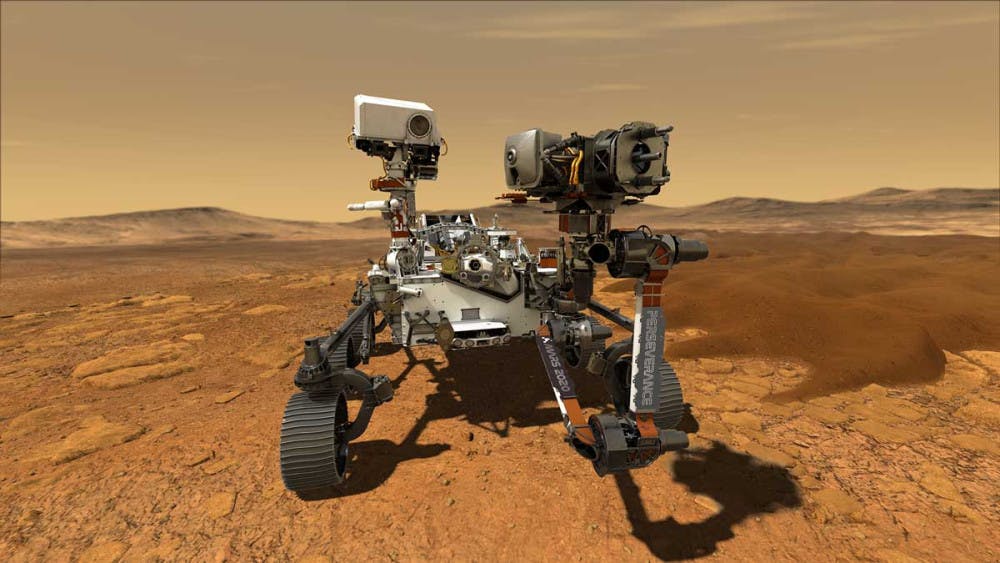One 7-minute descent at 200 to 1000 mph through Mars's atmosphere. One giant leap for mankind.
This was the journey NASA’s newest Mars rover Perseverance took on Feb. 18 to land near an ancient river delta in the Jezero Crater. Launched last summer, the rover traveled 293 million miles (471 million kilometers) to reach its destination. Its main goal is to search for microbial life. Perseverance is currently located where a river flowed around 3.5 billion years, making it an ideal search spot as the delta likely “collected and preserved organic molecules and other potential signs of microbial life,” according to NASA.
James Ryan, professor of physics and astronomy at the University of New Hampshire (UNH) said, “Perseverance is the result of all the questions that were raised during the other rover missions. They're bringing out the heavy artillery here to try to answer those questions because they don't have to search around quite as much as they did originally. They got some really specific questions that they really designed some instruments to go after.”
Perseverance will also be collecting samples of Mars’ surface that it will store until it reaches a drop-off location. NASA will then send up a collection craft. The samples should return to Earth in a decade. Ryan also discussed what fossilized evidence of single-celled life on Mars would mean for the scientific community.
“If [there is evidence that single celled life] has already taken place on Mars, then the start of life isn't such a big deal. It can happen in any number of places even within our solar system,” said Ryan. He pointed to some of the moons of Jupiter and Saturn, whose rich atmospheres and icy surfaces could foster microbial life.
Perseverance has also garnered attention because of its recording abilities. NASA added 25 cameras to the rover—the most ever sent to Mars. Unlike 2012’s Curiosity rover—which could only produce grainy, stop-motion images—Perseverance allowed NASA to capture a high quality compilation of its descent. The rover also made history after descent when its microphone picked the first audio recording on Mars of the planet’s howling winds.
Matt Wallace, a deputy project manager on the mission, explained he was inspired to cover the rover in cameras when his daughter strapped a small video camera on herself and did a backflip.
“I felt for a moment I had a glimpse into what it would be like if I could do a backflip,” he said. He hopes that Perseverance will give the viewers the feeling they’re landing on Mars.
During the landing alone, the spacecraft collected about 30 gigabytes of information and more than 23,000 images, said Perseverance team member Dave Gruel at a press conference. NASA plans to continually upload the spacecraft footage to take viewers along with Perseverance as it explores Mars.
Along with Perseverance’s mission, NASA will also be testing the rover’s travel companion, the Ingenuity Mars Helicopter. The helicopter will be the first test of powered, controlled flight in Mars's atmosphere.
“The atmosphere on Mars is so thin [that] the density of gas on the Martian surface is the same as it is on Earth at 100,000 feet,” explained Ryan. “So, trying to create an airborne vehicle that can operate in virtually nothing. It's pretty amazing.”
Depending on Ingenuity’s performance, NASA may include small helicopters on future missions as robotic scouts or standalone spacecraft.
Aerial access combined with improved recording abilities would be game changer for space research, says Ryan, as scientists will be able to survey Mar’s surface faster and more comprehensively than ever before.
Updates on Perseverance’s journey can be found on the rover’s twitter account or NASA’s website.
Photo courtesy of NASA.












